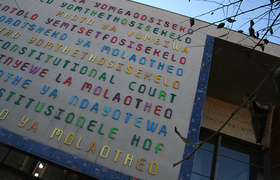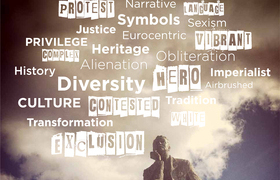Knowledge of the marginalised essential to curriculum
05 January 2015Assoc Prof Harry Garuba
School of African and Gender Studies, Anthropology and Linguistics
Curriculum transformation is an area that does not lend itself to the simplicity of numbers. It is easy to escape scrutiny when the focus is on matters that can be represented in numbers, such as the number of black and white professors at a university.
But anyone who knows anything about postcolonial societies and their histories will know about the curricular changes that happened in the 1960s. Others will know about those that occurred in Europe and North America from the 1980s onwards are because of the huge migrations that changed the face of many Western countries and resulted in the multiculturalist movement.
These two historical moments were accompanied by conversations and debates about what, say, a decolonised curriculum will look like in Africa or Asia and what a multicultural curriculum will look like in the West.
In South Africa therefore, we do not need to start at ground zero when we think of transforming curricula. We should learn lessons left to us by these earlier debates and the new curricula practices they set in motion.
But let us take the experts out at this point and remind ourselves that, at a basic level, a curriculum is simply a way of assigning value, a way of discriminating between what we think is important and valuable and what isn't.
In addition to assigning value, a curriculum determines the academic formation of a new generation. That is, it helps to create people who think in a particular way about particular subjects and talk about them in a particular language and idiom. This is what makes the curriculum a particularly good place to plant the seeds of transformation.
How, therefore, do we think about curriculum in the context of higher education in South Africa today? The first step is to recognise the cultural and scientific production - the knowledge - of previously disadvantaged groups of people. This is not a new proposition - recognising and according value to the previously disadvantaged was what was supposed to have happened politically in 1994. This now has to happen in universities too.
It would not only be presumptuous, but impossible for me to describe in fine detail how this should be done in each discipline. Yet it is possible to again reiterate the principles that should inform and guide this process and points that the specialists need to keep it in mind.
In your own discipline, you may, first, want to adopt a content-driven additive approach and expand the curriculum already in place. Or you may want to adopt the different approach of thinking how the object of study itself is constituted, what tools are used to study it, and what concepts are used to frame it.
This is because analytical tools and concepts may marginalise some students and privilege others. This kind of approach will not only supplement simple additions to the content of the curriculum, it will lead to a rethinking of the theories and methods that underlie the framing of the curriculum.
Borrowing a term from music, the Palestinian theorist Edward Said suggested that the way to most productively read, analyse or interpret a text is to do so contrapuntally.
Contrapuntal analysis takes into account the perspectives of both the colonised and the coloniser, their interwoven histories, their discursive entanglements - without necessarily harmonising them or attending to one while erasing the other.
Transforming the curriculum involves contrapuntal thinking at every level; it needs a contrapuntal pedagogy that brings the knowledge of the marginalised to bear on our teaching.
A transformed curriculum is one that encourages contrapuntal thinking and pedagogy. For example, next time your philosophy professor teaches you Hegel's 'master and bondsman' and does not mention Haiti, ask him why.
This is an excerpt from Harry Garuba's article 'What is an African curriculum', published in the Mail & Guardian on 17 April 2015.
|
|
 This work is licensed under a Creative Commons Attribution-NoDerivatives 4.0 International License.
This work is licensed under a Creative Commons Attribution-NoDerivatives 4.0 International License.
Please view the republishing articles page for more information.










